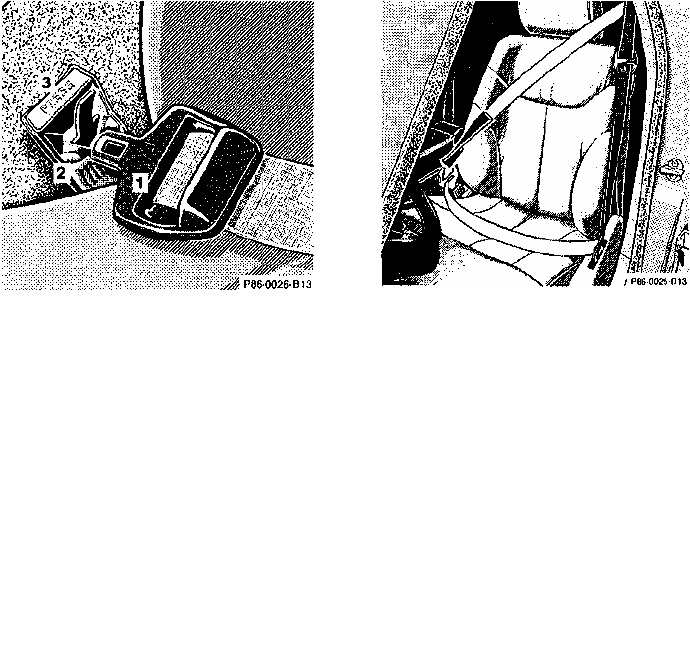
49
Seat Belt Warning System
With the key in steering lock position
2, a warning sounds for a short time if
the driver's seat belt is not fastened.
Warning!
Failure to wear and properly fasten
and position your seat belt greatly
increases your risk of injuries and their
likely severity in an accident. You and
your passengers should always wear
seat belts.
If you are ever in an accident, your
injuries can be considerably more
severe without your seat belt properly
buckled. Without your seat belt buck-
led, you are much more likely to hit the
interior of the vehicle or be ejected
from it. You can be seriously injured
or killed.
In the same crash, the possibility for
injury or death is lessened with your
seat belt buckled.
1 Latch plate
2 Buckle
3 Release button
Fastening of Seat Belts
Push latch plate (1) into buckle (2)
until it clicks.
The lap belt should be positioned as
low as possible on your hips and not
across the abdomen.
Three-point seat belt:
Tighten the lap portion to a snug fit by
pulling shoulder portion up.
Rear center seat belt: Tighten to a snug
fit by feeding belt toward retractor.
Adjust seat belt so that shoulder
portion is located as close as possible
to the middle of your shoulder. Do not
twist the belt.
The shoulder portion of the seat belt
must be pulled snug and checked for
snugness immediately after engaging
it. The height setting for the shoulder
portion of the front seat belts are
automatically adjusted by the fore/ aft
movement of the front seat.
Seat moved to front: Belt outlet fully
lowered.
Seat moved to rear: Belt outlet fully
raised.


















